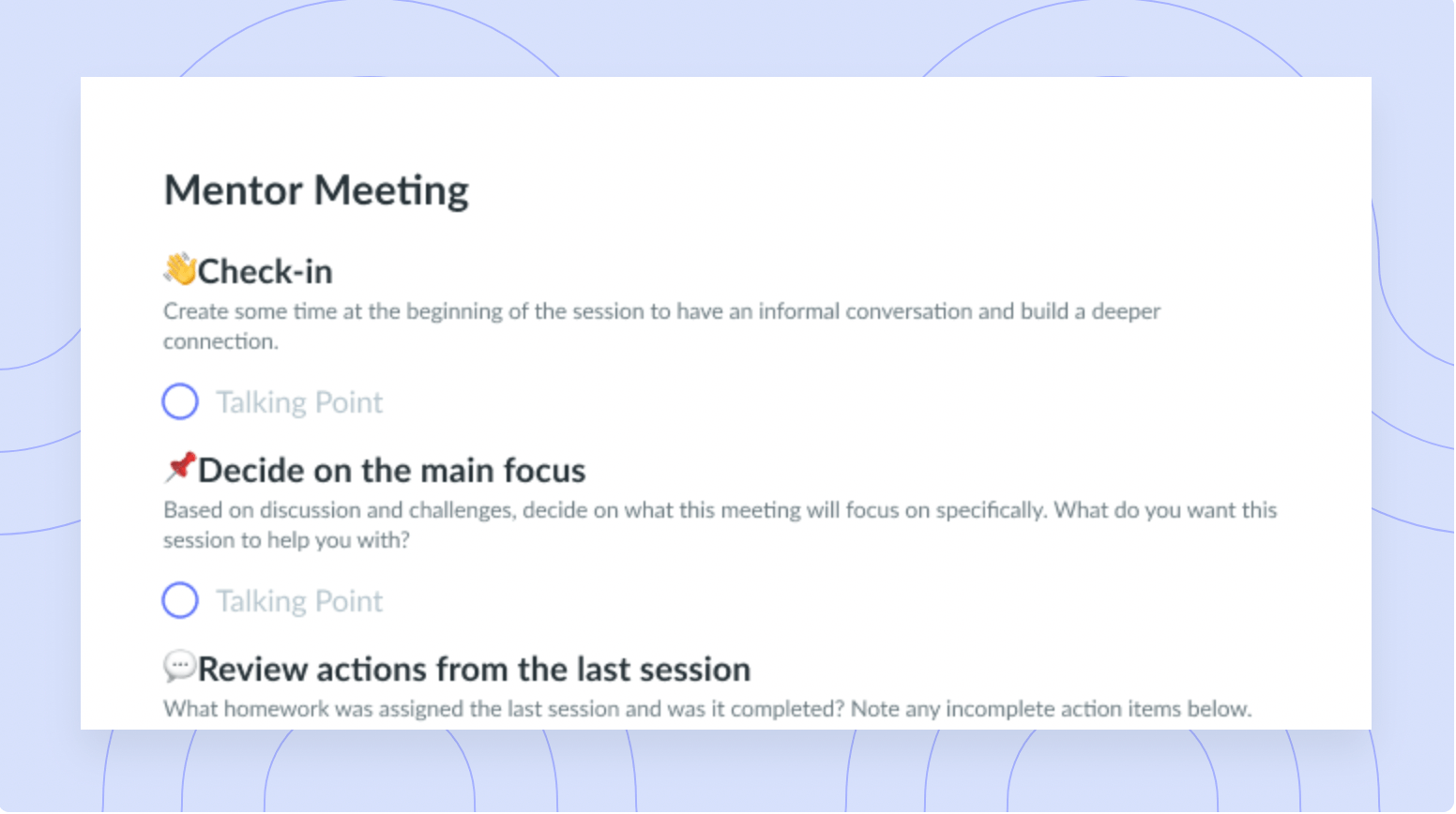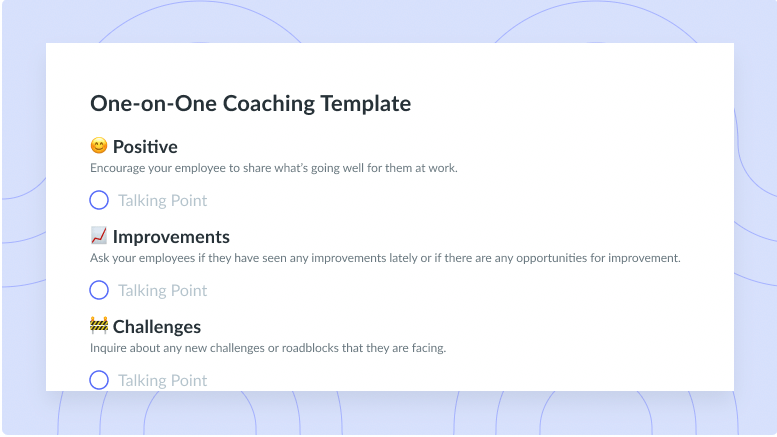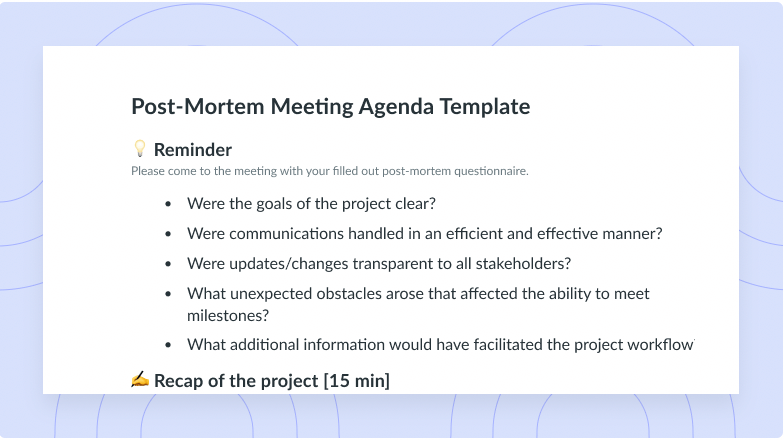
MoSCoW Prioritization Meeting Template
Get this templateUse this MoSCoW template to discuss for four different categories of initiatives: must-haves, should-haves, could-haves, and will not have.




What’s inside MoSCoW Prioritization Meeting Template:
MoSCoW prioritization, also known as the MoSCoW method or MoSCoW analysis, is a popular prioritization technique for managing requirements. MoSCoW stands for four different categories of initiatives: must-haves, should-haves, could-haves, and will not have. Sometimes, the “W” in MoSCoW is used to stand for “wish” instead of “will not have right now.”
1 ❕1. Must-have initiatives
This category consists of initiatives that are “musts” for your team. They represent non-negotiable needs for the project, product, or release in question.
- What happens if we release without this?
- Is there a workaround or a more simple way to accomplish this?
- Will the release/project/product work without this initiative?
2 💚 2. Should-have initiatives
They are essential to the product, project, or release, but they are not vital. “Should-have” initiatives are different from “must-have” initiatives in that they can be slated for a future release without impacting the current one.
3 💛 3. Could-have initiatives
“Could-have” initiatives are not necessary to the core function of the product. However, compared with “should-have” initiatives, they have a much smaller impact on the outcome if left out.
4❌ 4. Will not have (this time)
This helps manage expectations about what will not be included in a specific release (or another timeframe you’re prioritizing for). Placing initiatives in the “will-not-have” category is one way to help prevent scope creep.
















